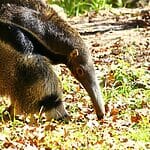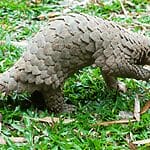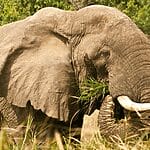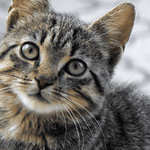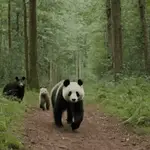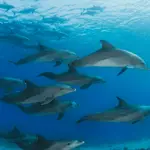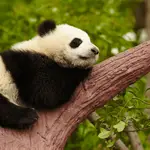In the animal kingdom, cooperation is a powerful tool for survival. Some species rely heavily on teamwork to hunt, build homes, or defend themselves. Yet, the complexities of this behavior raise intriguing questions—how do animals know when and how to work together?
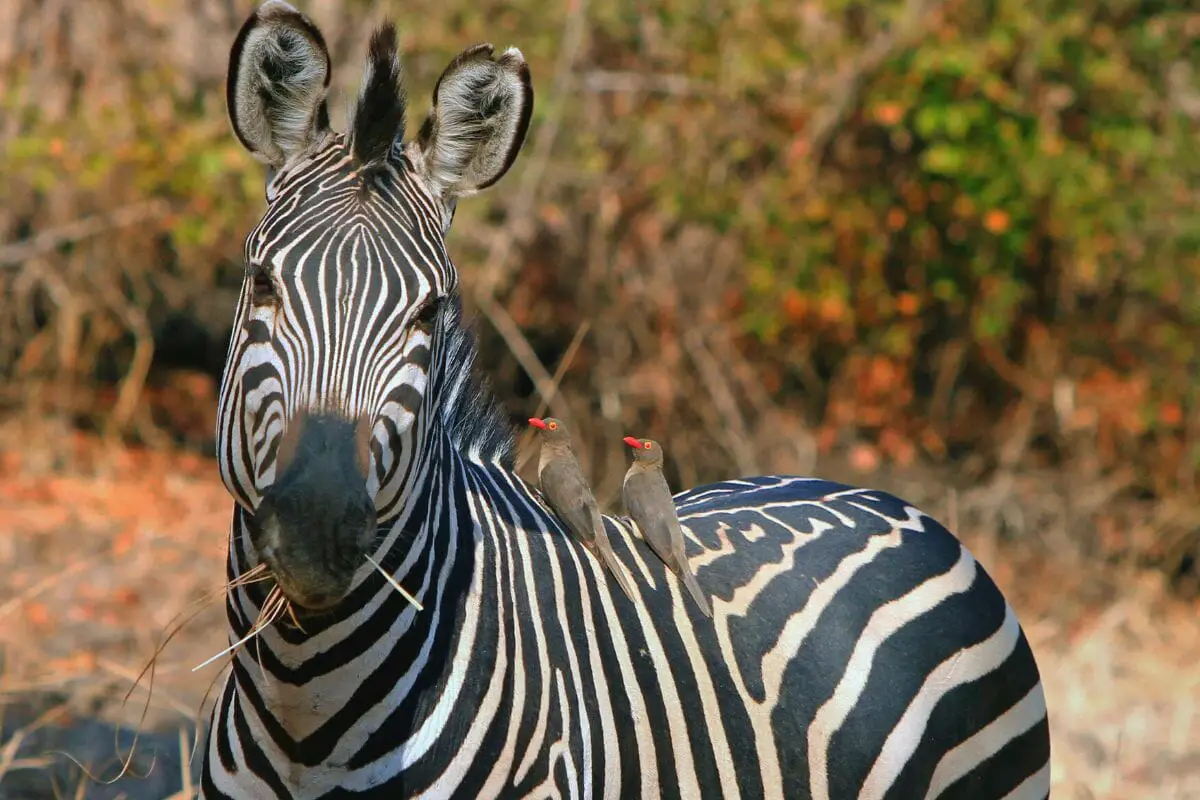
The struggle for survival can be unforgiving. For animals, a lack of coordination can lead to missed meals, failed protection from predators, or an inability to raise young safely. Teamwork isn’t just beneficial—it’s necessary for many species.
Consider ants, for example. A single ant achieves little on its own, but together, colonies can construct complex tunnels and transport food many times their size. How do they coordinate such feats?
In this article, we’ll explore the fascinating partnerships in nature and break down how animals collaborate to overcome their challenges. Keep reading to discover how this cooperative behavior ensures survival against all odds.
1. Woolly Bats And Pitcher Plants
A pitcher plant is a carnivorous plant that uses nectar around the rim of their mouth-like types to attract small insects and vertebrates.
Because the rim is also slippery, it causes the animals to fall into the digestive substances in what surmounts to the plant’s stomach.
The tube-like structure of the plant makes it practically impossible for the insects to climb back out before they’re digested.
Though the majority of animals would try to avoid a plant like this, there is a species of plant who has found a way to form a symbiotic relationship.
Woolly bats in Borneo are known to roost and find shelter within a tropical species of pitcher plant, known scientifically as Nepenthes Hemsleyana.
This provides a safe place for the bat to rest or sleep where insects are frequently drawn to, all the while providing the plant with guano (feces) that provide the plant with nutrients beneficial to its survival.
Strangely enough, this is not the only example in the world of small mammals finding shelter within carnivorous plants.
Tree Shrews will climb up and feed on another Bornean pitcher plant (Nepenthes Iowii) and feed on the sweet nectar that usually attracts the insects.
As the shrew feeds, it also provides sustenance for the plant in the form of its feces as well.
2. Pistol Shrimps And Gobies

This unlikely duo of marine life consists of Pistol Shrimp and small goby fish. These species have been well studied and documented as benefiting from their facultative mutualism.
The pistol shrimp is a burrower, creating holes in the sea floor that they can live in that they take pride in, and sometimes share with their roommate, a goby.
If they are ever outside of the burrow, these two will stick together, often with the pistol shrimp resting its antennae on the fish in order to maintain a physical connection.
Gobies have significantly better predator detection, and if a potential threat is spotted, it will use chemical cues to signal that they’re in danger and bolt back to the burrow.
Because the shrimp has been laying its antennae on the fish, it is able to pick up on the chemical cue and knows that it needs to return home as well.
Typically, gobies are the look out. They will be the first one to venture outside, and if it deems it safe to leave, the shrimp will follow.
The shrimp will also benefit from the goby not only from their superior predator detection, but also from any parasites living on its body or from any nutrients in the fish’s feces.
3. Oxpeckers And Wildebeests
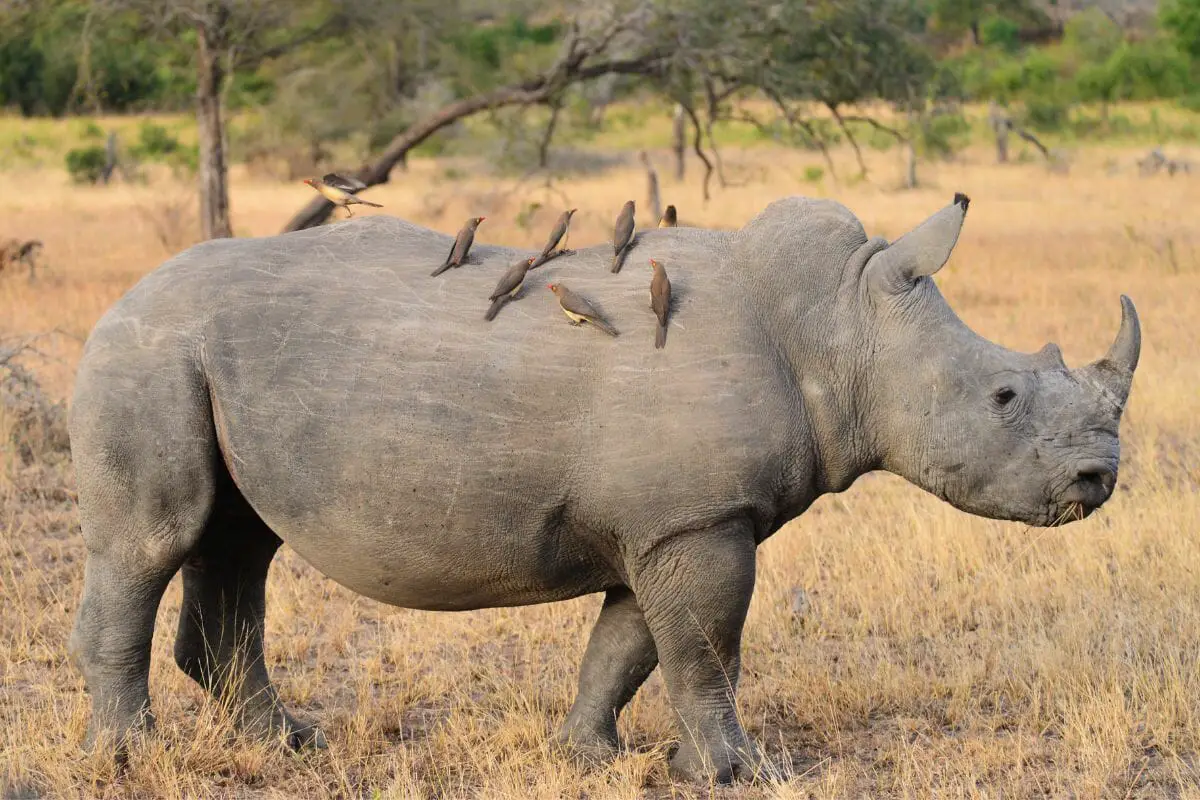
This technically could be true about Oxpeckers and other large Savannah-grazing mammals such as zebras and rhinos.
Both species of oxpeckers (red-billed and yellow-billed) will spend their time sitting on these animals whilst they graze, and pick off parasites such as flies and ticks.
The birds get an easy meal whilst the mammal’s parasite load is kept under control and healthy.
This is already beneficial for the mammals, however, the oxpeckers have also been known to raise alarms when there is impending danger, such as lions or even humans. This is particularly beneficial for rhinos who have bad long-distance eyesight.
That said, it’s difficult to classify this relationship as perfectly mutualism due to the fact that these birds can cause injury and harm their host, sometimes digging deep wounds into their hides.
The mammals however, don’t seem particularly put off by this behavior, though it certainly doesn’t benefit them.
Similar to this but without the danger of wounds is the water buffalo and the cattle egret.
4. Honeyguides And Humans
Yup, this list also involves symbiotic relationships formed between species and humans. This is particularly interesting in species that we haven’t domesticated.
Honeyguide birds prefer to eat the eggs, larvae, and beeswax that can be found in bee bests. However, they are often not able to break into the beehives on their own, and so a partnership is required.
The human-honeyguide relationship has been documented across multiple different colonies and native tribes, such as the Hadza people in Tanzania.
The honeyguides will use a demanding call that is well-known to mean that they have found a bee hive. Then the humans will reply with a call that has been passed down for generations and follow the bird.
When humans reach the nest, they’re able to disarm the bees, generally using smoke, and break into the nest. Some tribes make up about 10& of their diet from honey and honeycomb thanks to these aptly-named birds.
Once the beads have been taken care of and the humans are satisfied, the honeyguides then get to feast on the remaining beeswax and larvae that have been left behind – beneficial for all involved.
5. Aphids And Ants
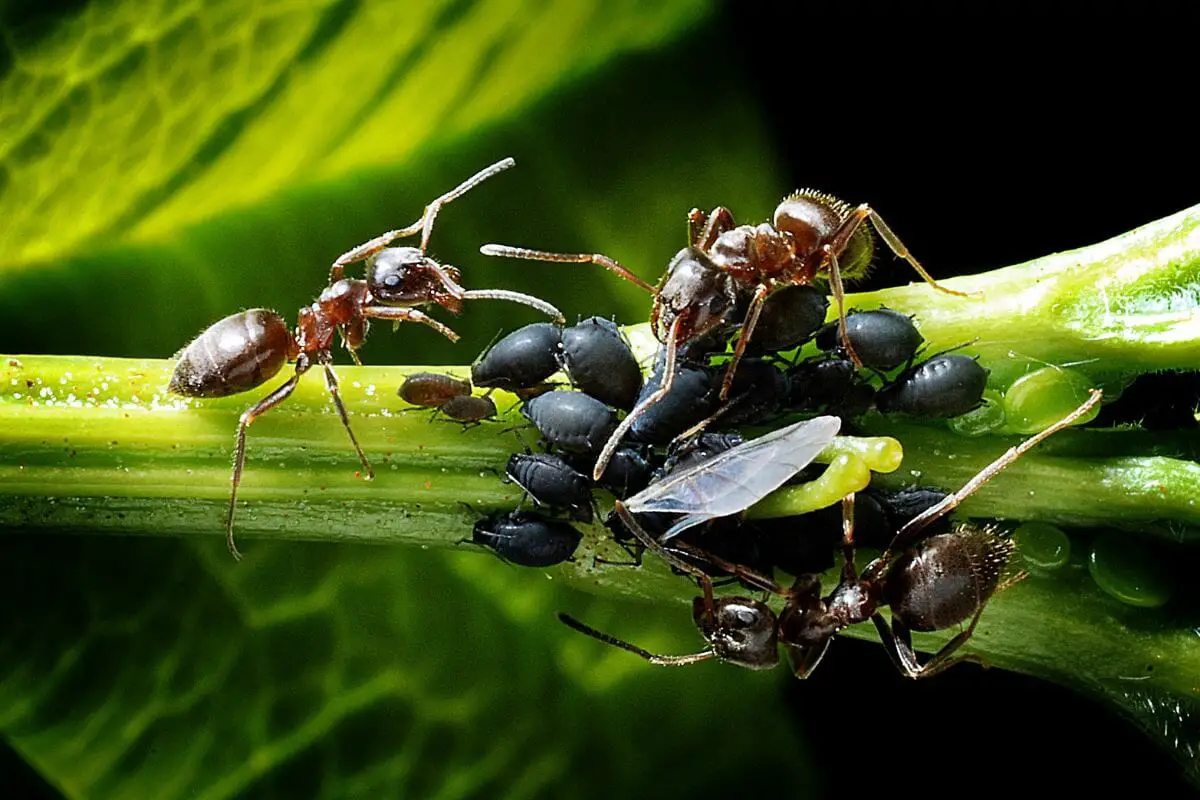
An aphid is a tiny insect that consumes sap and secrete a substance known as honeydew. This is a sugary liquid that appeals to a lot of other animals (see also: Animals That Sleep A Lot)and insects, and is a byproduct of the aphids’ sweet diet.
There are a lot of other insects that produce honeydew, though there are few others that form such an interesting mutually beneficial relationship as aphids and ants.
Many aphids are known for establishing these mutualistic relationships with the larger ants by allowing the ants to feed on the honeydew that they create by “milking” the aphids with their antennae.
As compensation for this, some ants will actively protect aphids from predators or from parasites.
There have been documented cases of ants moving aphid eggs or nymphs to the ant nests, almost creating a dairy farm kind of situation.
However, there are some aphids that have evolved to take advantage of this situation.
If ants carry a certain kind of aphid to their brood chamber in order to be milked, these ant-mimicking morphs will drink the body fluid from the ants’ larvae and destroy the eggs.
This puts into question whether this is really a mutualistic relationship, however, everyone comes out having benefitted, except for the ant larvae that got its fluid eaten, of course.
6. Water Buffalo and Cattle Egrets

The relationship between water buffalo and cattle egrets is a well-known example of commensalism. Cattle egrets follow water buffalo as they graze, feeding on insects stirred up by the movement of the buffalo through tall grass.
This interaction benefits the egrets by providing them with a consistent source of food, while the buffalo are neither helped nor harmed.
In some instances, this relationship can shift towards mutualism. If the egrets remove ticks or other parasites from the buffalo, both animals benefit—the egrets gain nourishment and the buffalo experience relief from pests. This flexible interaction highlights how animals can adjust their behavior based on environmental conditions.
7. Egyptian Crocodiles and Plovers
The story of Egyptian crocodiles and plovers is often cited as an example of mutualism, but it is more myth than fact. According to folklore, plovers, or “crocodile birds,” would clean the teeth of crocodiles by removing food debris, supposedly benefiting both species. The crocodile would get dental care, while the plover would receive an easy meal.
However, there is no scientific evidence to support this interaction, and most reports are anecdotal. While the story captures imaginations, it remains largely a myth with little ecological basis.
Despite this, it serves as a reminder of how easily observed behaviors can become misunderstood in nature.
8. Carrion Beetles and Mites

Carrion beetles and mites demonstrate a mutualistic relationship in which both species gain significant advantages. Carrion beetles transport mites to decomposing carcasses, where the mites feed on fly eggs. This reduces competition for the beetles’ larvae, who also rely on the carcasses for food.
While this relationship is mostly phoretic—meaning the mites use the beetles for transportation without causing harm—there are instances where high mite populations may impact beetle health.
In these situations, mites might compete for resources or affect the beetles’ reproductive success. Nonetheless, this interaction generally works well for both species by enhancing their survival in environments rich in organic material.
9. Honey Badgers and Honeyguides
Honey badgers and honeyguide birds demonstrate a unique potential mutualistic relationship, although it remains somewhat speculative.
Honeyguides are known for leading animals, including humans, to bees’ nests. Once the honey badgers break open the nests, both the birds and the badgers benefit. Honey badgers access honey and bee larvae, while honeyguides feed on the remaining beeswax and grubs.
Although much of this interaction is based on anecdotal evidence, particularly from communities in Tanzania, it suggests that this interspecies cooperation could occur in certain regions, where environmental and cultural conditions support such interactions.
10. Clownfish and Sea Anemones
Clownfish and sea anemones have a well-established mutualistic relationship. The clownfish find protection among the venomous tentacles of sea anemones, avoiding predators that cannot tolerate the stings.
In exchange, the clownfish provides several benefits to the anemone, including removing debris, supplying nutrients through their waste, and helping with water circulation to enhance respiration.
This partnership is highly specialized, with only certain species of clownfish and sea anemones able to coexist. The relationship supports both species while contributing to the broader health of coral reef ecosystems.
11. Meerkats and Drongos

The relationship between meerkats and drongos illustrates an intriguing form of interspecies cooperation. Drongos serve as lookout birds for meerkats, sounding alarm calls to warn them of approaching predators.
In response, meerkats quickly retreat to safety, sometimes dropping their food in the process. Drongos benefit by swooping down to eat the abandoned meals. However, the drongos occasionally exploit this trust by issuing false alarms to trick meerkats into leaving their food behind.
Despite this occasional deception, the relationship remains largely beneficial, and the drongo’s ability to mimic meerkat calls adds an extra layer of complexity.
Bottom Line
It’s true that there are a lot of animals who thrive and prefer to live solitary lives, however there are just as many creatures out there that survive or thrive thanks to collaboration and teamwork.
Most of the time, this is in the form of an animal’s pack or flock, however, there are also a bunch of examples of animals from completely different species that are able to work together and form incredible bonds that benefit all parties,
Collaboration and team-building isn’t just for corporate workplaces!
Frequently Asked Questions
Can Animals Make Friends?
Yes, absolutely! We have documented a lot of animals having preferences for one another in a clear sign of friendship, but particularly in mammals with high intelligence.
A lot of the time, these friendships are formed by the same species, such as higher primates, members of the horse family, and elephants.
However, it’s completely possible that some of these mutualistic bonded animals are able to form a sort of friendship as well.
What Forms Of Symbiotic Relationships Are There
There are three basic types of symbiotic relationships:
- Mutualism, where both members of the bond benefit from the interaction without being harmed. This could be ants and aphids, or bats and pitcher plants.
- Commensalism, in which one party benefits from the relationship whilst the other sees no kind of positive or negative effect to themselves.
- Parasitism, where one creature benefits greatly from having a symbiotic relationship but is actively harming the other animal because of it. Generally, this would be a parasite of some kind.
- What Should I Do If A Koala Bites Me? Safety Guide - 2024-05-30
- Are Kangaroos Born Without Hind Legs? A Fascinating Journey - 2024-05-30
- Animals That Look Like Squirrels - 2024-05-30

